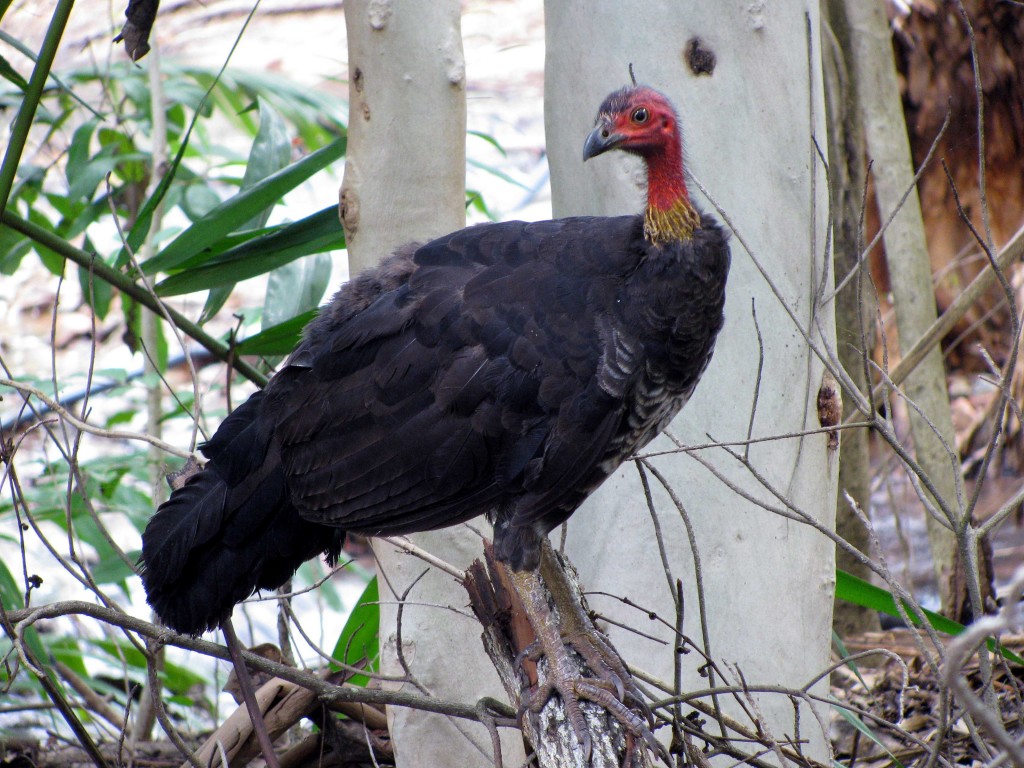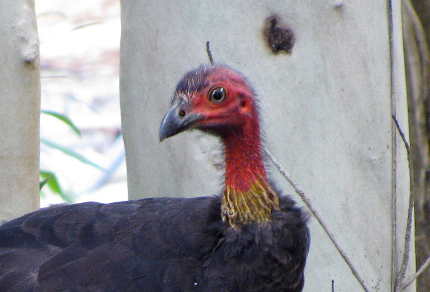Yesterday afternoon, the sky fairly roiled with brooding unpredictability while parkway birds fed, courted, and squabbled frenetically. I expected rain in the night, which we received, but not in the roof-pounding quantities I thought might wake me from my sleep, as happened so frequently during the Wet and a few times since. This morning, however, I discovered that other signs of rain are unfolding in Queensland.
Black ants are congregating on high ground and carrying eggs into houses. Frilled lizards are standing with their heads up and mouths open. Little corellas are flocking. According to an article in today’s Townsville Bulletin, these are signs that an early Wet is heading our way.1 More evidence is reamed off – lots of emu chicks and the early laying of brush-turkey eggs. Saltwater crocs mating a month early. Fish jumping in the swamps. Red-tailed black-cockatoos dispersing. Station owners and cane growers, as well as your everyday Queenslanders, have been taking note of these animal behaviours, which are typically associated with the impending onset of the wet or with an unusually Big Wet.1
And it’s not only the animals that are predicting a whopper of a Wet. The Queensland Bureau of Meteorology is forecasting six tropical cyclones off the state’s coast, the first of which may arrive before Christmas.1 With all the rain Queensland has already received this year, an early and big Wet could result in flood damage the likes of which hasn’t been seen for decades.1
All this is most intriguing. Not being a long-time resident of Queensland, I have no previous years of natural history observations with which to compare the notes I’ve accumulated since our arrival on December 30, which happened to coincide with a 200-millimetre downpour that definitely signalled the onset of the Wet. However, I was struck by the large flocks of little corellas I saw at Mount Isa a week ago, and ants have definitely begun invading our rental house, after having left us largely in peace following the end of the Wet. Months ago, I observed brush-turkeys scratching soil and leaves into mounds in which male turkeys incubate eggs laid by their mates. So, perhaps the evidence has been mounting before my eyes, with only my newness to Australia preventing me from recognizing it.

Australian Brush-turkey, James Cook University, Townsville, Queensland (© Magi Nams)
Note that I’ve recently completed several posts related to Vilis’s and my trip to Alice Springs: September 30 – Leaving the Red Centre – Alice Springs to Mount Isa; October 1– Leaving the Red Centre – The Great Artesian Basin; October 4 – Images from the Red Centre; October 5 – Spinifex; and October 7 – Devils Marbles. More will be published shortly.
Reference:
1. John Andersen. Big wet is on its way. Townsville Bulletin, Saturday, October 9, 2010, p. 9.


